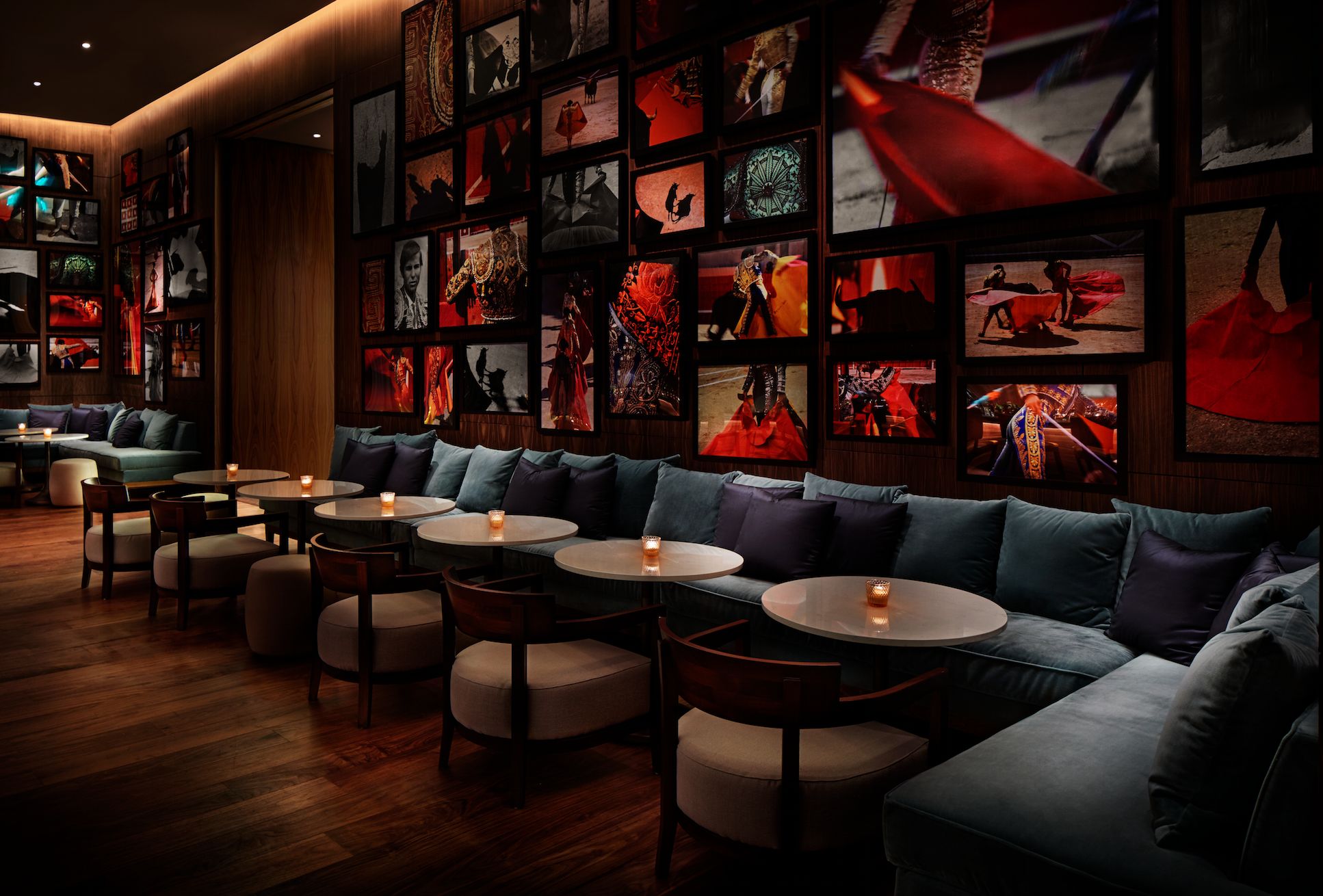Fifteen years ago, Nobu Milan opened in the Armani building (which houses various Armani stores, plus other brand ventures, like an Armani Hotel) in the city’s Centro Storico neighborhood. Though the restaurant’s two founders – chef Nobu Matsuhisa, 65, and fashion designer Giorgio Armani, 80, – remain internationally influential and relevant, its interior was ready for a redesign after more than a decade of use. This time, Armani himself stepped up to the task, further developing the collaborative nature of the restaurant-within-a-store structure.
“I wanted to first of all, give the venue a new feeling of harmony, and to emphasize the sense of space in this large structure, playing with an almost abstract idea of Japonisme,” Armani says. “I wanted to lighten up and deconstruct the environment – not just physically, but also visually.”
To open the space, Armani redesigned the entrance hall and bar with a new layout to make it more welcoming. The sushi bar on the first floor was moved and completely redone. He also widened the area available for drinking and lounging by renovating the pre-existing veranda that looks out onto the fashionable Via Pisoni. The restaurant’s new dining room is moody and bright, with grays and beiges punctuated by bright orange upholstery. Armani hoped the simple nature of the designs would put the focus on textures and materials – and, of course, the food.
It is a very subtle game of counterpoints,” he says.
The restaurant isn’t small – it seats 130 on the ground floor and 100 more upstairs – but certain balancing touches, like traditional Japanese ceiling beams and wood and woven-mat wall finishings, lend a rather unexpected coziness to the dining areas. Solid curved-wood chairs and booths reflect the designer’s modern influences. The herringbone-patterned floor is stained in a classic Armani beige-gray tone, and the dining room gets its moody glow from Murano glass lamps from the Armani Casa line – details that further the connection between the restaurant and the fashion label who’s stores surround it. Armani’s favorite detail of the space: the precious liquid-metal panels that cover the sushi bar. “These are visible form the stairwell,” he says. “They’re the stars of the whole composition.”
When asked whether his career as a fashion designer informs his work in interiors, Armani asserts that his process for both fields is the same. “I see no substantial difference between the two activities,” he says. “In both cases, the process involves realizing an idea, then working on shapes, volumes, textures, and finishes. Care must be taken to address requirements such as comfort, function, and beauty – and beauty and usefulness must coincide in an elegant and natural manner.”
